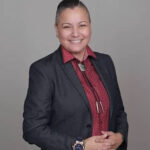Share
The coming-out process can feel both awkward and rewarding for clients. So much comes to mind when we talk about clients disclosing their sexual orientation or gender expression. Some clients experience happiness, relief, grief, pride, excitement, vulnerability, shock, anger, confusion, depression, suicidal thoughts, ups and downs, loneliness, isolation, fear, and/or anxiety, just to name some of the typical emotions brought about by this process. The first thought we should have as providers is, “I can do this; I can work with this client.” As professionals, we have worked with many different clients with ranges of perspectives, backgrounds, stories, and circumstances. As an advocate and member of the “rainbow community,” I am here to tell you that you can do it!
Often, when I am speaking to professionals as I travel throughout California and the nation, I hear practitioners considering their lack of experience with this community as a reason to refer potential clients to other providers with special credentials or experience. This puts stress on the treatment system, as referrals are not warranted unless programs absolutely cannot help clients. Let us dive in a little bit deeper and go over a couple of scenarios.
The first concern should be to consider whether clients are exhibiting any symptoms of depression. Consider the basics: Are clients experiencing any of the following classic symptoms?
- Feelings of sadness
- Tearfulness
- Hopelessness
- Short temper
- Irritation
- Loss of interest/lack of pleasure
- Memory loss
- Flat affect
- Sleep disorders
- Tiredness
- Reduced appetite and weight loss
- Feelings of worthlessness
As you would with other clients, refer to the appropriate mental health providers if depression is not within your scope of practice. Otherwise, work with these clients—it is that simple. Unless there are specific, primary, LGBTQIA2+ issues or areas of concern that are hindering progress (such as gender dysphoria, the coming-out process, or others), approaches to working with this population do not need to be overly tailored.
Some people from the LGBTQIA2+ community suffer from gender dysphoria, which may give rise to some special concerns that not all counselors are aware of. Remember though, not all LGBTQIA2+ persons have gender dysphoria. It is important to become familiar with this diagnosis because some of the clients you serve might come out to you and let you know they have gender dysphoria. Let us take a closer look at gender dysphoria and the coming-out process.
Gender Dysphoria
The term “gender dysphoria” replaced the term “gender identity disorder” used in an earlier version of the DSM. According to the American Psychiatric Association (APA):
Gender dysphoria involves a conflict between a person’s physical or assigned gender and the gender with which he/she/they identify. People with gender dysphoria may be very uncomfortable with the gender they were assigned, sometimes described as being uncomfortable with their body (particularly developments during puberty) or being uncomfortable with the expected roles of their assigned gender (2020a).
Further:
Both gender identity issues and feelings of dysphoria may manifest in a variety of different ways. A person with female sex characteristics, for example, may privately identify as a man, but continue to publicly present themselves as a woman. Another may choose to dress in clothes associated with the gender with which they identify, while yet another may seek hormone treatment or surgery as part of a transition to living full-time as the gender with which they identify. Each of these individuals may—or may not—experience significant feelings of distress or impairment as a result of their gender identity concerns. Adults with gender dysphoria typically feel uncomfortable being regarded by others as their assigned gender and often desire to be rid of the physical sex characteristics associated with it.
Gender identity incongruence and the feelings of distress that indicate gender dysphoria can be present in children, adolescents, or adults, and can manifest differently across age groups. A child who is assigned one gender may express the wish to be a different gender, state that they are, or assert that they will grow up to be. They may also prefer the clothing, hairstyles, or toys typically associated with the other gender and may demonstrate intense negative reactions when adults in their life attempt to have them wear clothing associated with their assigned gender. Additionally, some children will show discomfort with their physical sex characteristics.
Gender dysphoria in adults and children is considered a disorder if the person also experiences significant distress or impairment in major areas of life as a result of the incongruence. Identifying with a gender different from the one that was assigned is no longer considered a mental disorder in itself. (“Gender dysphoria,”, 2019)
Gender Dysphoria Diagnosis
The following diagnostic criteria is listed on the American Psychiatric Association (APA) webpage on gender dysphoria (APA, 2020b) and in the DSM-5 (APA, 2013).
The Diagnostic and Statistical Manual of Mental Disorders (DSM-5; APA, 2013) provides for one overarching diagnosis of gender dysphoria with separate specific criteria for children and for adolescents and adults.
The DSM-5 defines gender dysphoria in adolescents and adults as a marked incongruence between one’s experienced/expressed gender and their assigned gender, lasting at least six months, as manifested by at least two of the following:
- A marked incongruence between one’s experienced/expressed gender and primary and/or secondary sex characteristics (or in young adolescents, the anticipated secondary sex characteristics)
- A strong desire to be rid of one’s primary and/or secondary sex characteristics because of a marked incongruence with one’s experienced/expressed gender (or in young adolescents, a desire to prevent the development of the anticipated secondary sex characteristics)
- A strong desire for the primary and/or secondary sex characteristics of the other gender
- A strong desire to be of the other gender (or some alternative gender different from one’s assigned gender)
- A strong desire to be treated as the other gender (or some alternative gender different from one’s assigned gender)
- A strong conviction that one has the typical feelings and reactions of the other gender (or some alternative gender different from one’s assigned gender)
The DSM-5 defines gender dysphoria in children as a marked incongruence between one’s experienced/expressed gender and assigned gender, lasting at least six months, as manifested by at least six of the following (one of which must be the first criterion):
- A strong desire to be of the other gender or an insistence that one is the other gender (or some alternative gender different from one’s assigned gender)
- In boys (assigned gender), a strong preference for cross-dressing or simulating female attire; or in girls (assigned gender), a strong preference for wearing only typical masculine clothing and a strong resistance to the wearing of typical feminine clothing
- A strong preference for cross-gender roles in make-believe play or fantasy play
- A strong preference for the toys, games, or activities stereotypically used or engaged in by the other gender
- A strong preference for playmates of the other gender
- In boys (assigned gender), a strong rejection of typically masculine toys, games, and activities and a strong avoidance of rough-and-tumble play; or in girls (assigned gender), a strong rejection of typically feminine toys, games, and activities
- A strong dislike of one’s sexual anatomy
- A strong desire for the physical sex characteristics that match one’s experienced gender
Psychology Today’s information on gender dysphoria notes that in children:
The onset of cross-gender interests and activities is usually between ages two and four years, and many parents later report that their child has always had cross-gender interests. Only a small number of children with gender dysphoria will continue to have symptoms in later adolescence or adulthood. Typically, children with gender dysphoria are referred around the time of school entry, particularly if peer relationships become challenging or parents suspect that their child’s gender identity issues are not a phase. (“Gender dysphoria,” 2019)
Now that we have reviewed the DSM-5 diagnosis and additional information, it is important to remember that not all LGBTQIA2+ individuals will have this diagnosis. When working with clients with this diagnosis, please remember that it is a delicate subject and not everyone you come in contact with will want to talk about their experiences.
Here are some questions you may wish to use in order to engage with clients who may be experiencing or who have been diagnosed with gender dysphoria:
- “Have you experimented with different forms of gender expression? If so, how did it go?”
- “Which aspects of no gender appeal to you?”
- “Do you like any aspects of the gender you were assigned at birth?”
- “Which aspects of gender expression appeal to you?”
- “Do any aspects of expressing another gender appeal to you? If so, what are they?”
- “Are you pleased with the genitalia you were born with?”
- “Are you dissatisfied with some or all of your body parts?”
- “Did you ever want to be a different gender than the one you were assigned at birth?”
- “What pronouns do you use? Do you feel that these pronouns best represent you at this time?”
The Coming-out Process
When working with clients who will be coming out to their families, chosen families, loved ones, parents, children, cousins, aunts, uncles, lovers, bosses, schools, friends, providers, substance use disorder counselors, and mental health clinicians, it is of the utmost importance that you ensure the clients themselves are the ones who want to come out, and that you do not push them out if they are not ready. You can explore the readiness of your clients by asking some preparatory questions such as the following:
- “What do you think will happen when you tell __________ you are __________?”
- “Is there anyone you trust more when considering coming out?”
- “How might you offer yourself kindness, self-compassion, and the tenderness you need when coming out?”
It is also important to create a safety plan to prepare for any potentially dangerous scenarios that may occur with your clients, as things do not always go directly as planned. Additionally, never assume clients are ready to come out to their families because they came out to you. This process is intensely personal and should be approached at each client’s pace. We, as rainbow people, want to be respected and supported, not rushed or made to feel that society accepts us and we are foolish for waiting or deciding never to come out to anyone but our therapists or significant others.
Advice From The TREVOR Project
Although I have my own personal story that spans decades, each coming-out story is unique. Given the decades of study done in this area, there is no need to recreate the wheel. The TREVOR Project is a nonprofit formed in 1998 to save lives during the turbulent process of coming out by implementing a LGBTQIA2+-specific suicide-prevention phone number for clients in need of emergency support. This organization has developed a list of questions that people contemplating coming out may wish to explore (The TREVOR Project, n.d.):
- “How do I want to come out to them?”
- “What would I say to someone I want to come out to?”
- “What would I expect them to say?”
- “Is there a way I would want to prepare prior to coming out?”
- “What are some of the good responses I may hear?”
- “What are some of the bad responses I may hear?”
- “What do I expect their reactions will be based on what I know about the people I’m sharing with?”
- “How do I want them to react?”
- “What time works best for me to come out?”
- “What time of day feels like a good time to share? (before school, after work, during dinner, etc.)”
- “What time of year feels like a good time to share? (school season, summer, holidays, etc.)”
- “What time works best for the people I want to come out to?”
- “Would I rather be in a public or private space?”
- “Does home feel like a safe place to talk?”
- “Where would we both be comfortable talking?”
- “Is there a location special to me and the people I’m talking with?”
- “How would being out at school make me feel?”
- “Who would I want to share with at school?”
- “Are there supportive faculty members, counselors, teachers or adults at my school?”
- “Is there a Gender & Sexuality Alliance (GSA) or similar club/community I feel comfortable attending?”
- “Are there antibullying rules that protect LGBTQIA2+ students that are enforced at school?”
- “Will coming out put my safety at risk? If so, what steps can I take to stay safe?”
Suicidal Thoughts During the Coming-out Process
When clients come out, they are risking physical violence, harassment, and discrimination. As a result, some clients may think about wanting to die or kill themselves for any number of reasons. During the coming-out process, some LGBTQIA2+ people may also increase their consumption of alcohol or drugs to cope with how they are feeling, particularly if they are struggling with “internalized homophobia,” having sex with the same gender, not being accepted by friends and family, and/or being rejected by the people they have put trust in. Fortunately, many of these negative feelings are often accompanied by the benefits of coming out. Becoming part of the community, connecting with others who identify as LGBTQIA2+, and serving as leaders or role models to others who are finding their way out can give these clients the resiliency to balance negative feelings or experiences during the coming-out process. Clients who need more than reassurance may feel the following intense emotions:
- Talking about wanting to die or killing themselves
- Looking for ways to kill themselves
- Talking about feeling hopeless or having no reason to live
- Talking about feeling trapped or being in unbearable pain
- Talking about being a burden to others
- Increasing the use of alcohol or drugs
- Acting anxious or agitated
- Behaving recklessly
- Sleeping too little or too much
- Withdrawing or feeling isolated
- Showing rage or talking about seeking revenge
- Displaying extreme mood swings
Isolation During COVID-19
As LGBTQIA2+-identified people, your clients need to understand the importance of keeping connections with positive people while isolation is happening throughout America due to COVID-19. You should make sure to ask questions such as the following:
“Have you been worrying excessively, crying frequently, or having problems falling or staying asleep?”
“Have you increased your online activity or time playing video games?”
“If you have been online, have you been bullied in any way?”
“How have you been relaxing?”
“Do you have a support group to attend online or in person?”
Remind clients that self-care is extra important during the pandemic. Remind them to make sure to eat a good meal, read, walk, talk, text, exercise, and/or take long baths. Because the isolation of the pandemic may weigh on clients differently as time passes, it is important to make safety plans with your clients while COVID-19 continues to disrupt normal life routines. A safety plan is a prioritized written list of coping strategies and sources of support for clients who have been deemed to be high risk for suicide. Clients can use these strategies before or during suicidal crises, especially if they are struggling with family members who are not accepting of who they are at home, they have no other place to go, and they are forced to stay in the same house. The plan should be short and in clients’ own words. Always wrap back around with your clients if you know they are experiencing troubles at home due to their sexual orientation or gender expression, especially youth.
Making a Welcoming Environment
It is good practice to create a welcoming environment and to display nondiscriminatory policies that include sexual orientation and gender identity. Place a rainbow and trans flag where clients will see it when they walk in. Take a look at all of your discharge and intake forms and make sure they include a list of all the different sexual orientations and gender identities. Educate all staff on how to make sure to use clients’ correct names and pronouns, regardless of whether the names or sex match what is printed on their insurance cards. If your agency does not have LGBTQIA2+ support groups, make sure to bring it up with your leadership to incorporate them. There are many of these groups to explore: coming-out groups, trans groups, transition groups, LGBTQIA2+ healthy boundaries in relationships groups, and gender nonconforming or nonbinary LGBTQIA2+ groups, just to name a few.
Pride, Proud, and at Peace: The “Stages” of Coming Out
In closing, coming out and living out loud are sometimes taken in stages. Cass described “a process of six stages by which gay and lesbian individuals transform their stigmatized identities from negative to positive” (1979). Cass also focused on ego functioning, which refers to “a component of the self-consciousness system that relate directly to mental health” (1979). The six stages are as follows:
Stage One: Identity Confusion
This stage involves some denial and confusion regarding one’s feelings, thoughts, and attraction. It also involves conscious awareness that sexuality has personal relevance. The individual typically feels confused and faces a crisis about who they are.
Stage Two: Identity Comparison
In this stage, the individual begins entertaining the possibility of having a LGBT identity. There is continued dissonance and a feeling of social alienation. Individuals in this stage are often in emotional pain and are quite vulnerable.
Stage Three: Identity Tolerance
In this stage, there is reasonable certainty of an identity and tolerance, without acceptance of that identity. The individual seeks out other LGBT individuals to combat feelings of isolation. There is greater level of commitment to a new identity.
Stage Four: Identity Acceptance
In this stage, the individual attaches a positive connotation to their sexual identity and accepts rather than tolerates it. There is continuous and increased contact with other LGBT individuals.
Stage Five: Identity Pride
In this stage, there is the tendency for individuals to get angry or to split the world into heterosexuals and homosexuals. Individuals may become more active in the LGBT community and spend the majority of their time with others who share their feelings and perspective.
Stage Six: Identity Synthesis
In this stage, anger decreases, pride becomes less aggressive, and the individual’s identity is more integrated with all other aspects of self. Sexual orientation or gender identity becomes only one aspect of self rather than the entire identity (Cass, 1979).
Conclusion
When guiding clients through the coming-out process, remember it can take days, weeks, months, and even years to help them to address the world on their terms—and it should be on their terms, never pushed by their therapists. Some clients might never be ready to come out or feel that it is no one else’s business to share their experiences with anyone outside a therapeutic relationship. Encouraging your clients to be kind to their minds and letting them know you will work with them while they go through this process builds trust and rapport. It is always good to check in with your clients on their thoughts, feelings, safety plan, and what stage they are in with coming out. Additionally, you can help them with the process by going through some of the questions detailed in this article. Lastly, you as providers can help serve the LGBTQIA2+ community by becoming allies and learning more about LGBTQIA2+-focused education, best practices, and how best to work with the rainbow community.
References
American Psychiatric Association (APA). (2013). Diagnostic and statistical manual of mental disorders (5th ed.). Washington, DC: Author.
American Psychiatric Association (APA). (2020a). Expert Q&A: Gender dysphoria. Retrieved from https://www.psychiatry.org/patients-families/gender-dysphoria/expert-q-and-a
American Psychiatric Association (APA). (2020b). What is gender dysphoria? Retrieved from https://www.psychiatry.org/patients-families/gender-dysphoria/what-is-gender-dysphoria
Cass, V. C. (1979). Homosexual identity formation: A theoretical model. Journal of Homosexuality, 4(3), 219–35.
“Gender dysphoria.” (2019). Psychology Today. Retrieved from https://www.psychologytoday.com/us/conditions/gender-dysphoria
The TREVOR Project. (n.d.). Coming out: A handbook for LGBTQ young people. Retrieved from https://www.thetrevorproject.org/wp-content/uploads/2019/10/Coming-Out-Handbook.pdf

Kristina Padilla, MA, LAADC, ICAADC, CGS
Kristina Padilla, MA, LAADC, ICAADC, CGS, is a leader with the California Consortium of Addiction Programs and Professionals (CCAPP), where she serves as the vice president of strategic development and vice president of education, overseeing CCAPP’s education department. Mx. Padilla has a BS in criminal justice administration and a MA in counseling psychology with an emphasis on marriage and family therapy. She is on the board of directors of the National Association of Lesbian, Gay, Bisexual, Transgender Addiction Professionals and their Allies (NALGAP), where she is the vice president and the California representative. Mx. Padilla identifies as a trans, gender-fluid, two-spirit, nonbinary, biologically born woman. Her pronouns are she/her and they/them, and she goes by the suffix of Mx. Padilla.













 Counselor Magazine is the official publication of the California Association of Addiction Programs and Professionals (CCAPP). Counselor offers online continuing education, article archives, subscription deals, and article submission guidelines. It has been serving the addiction field for more than thirty years.
Counselor Magazine is the official publication of the California Association of Addiction Programs and Professionals (CCAPP). Counselor offers online continuing education, article archives, subscription deals, and article submission guidelines. It has been serving the addiction field for more than thirty years.